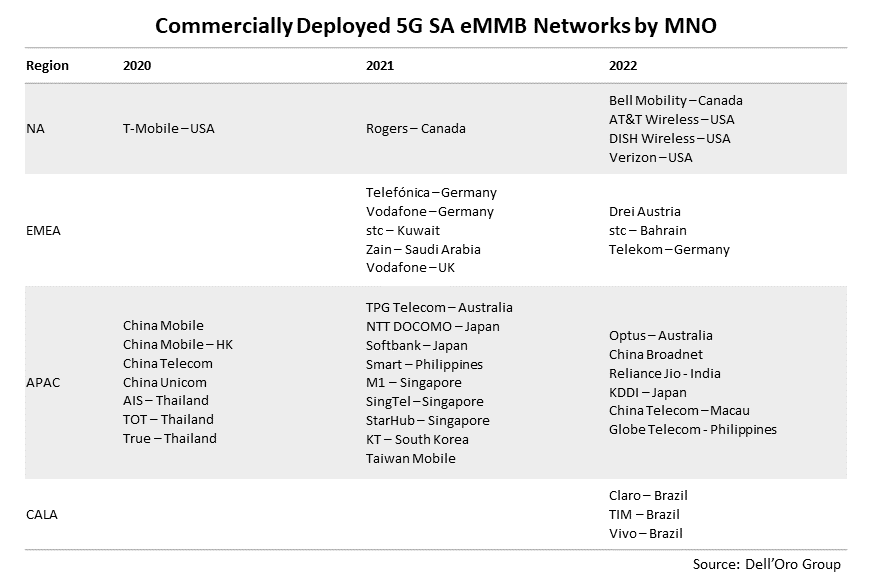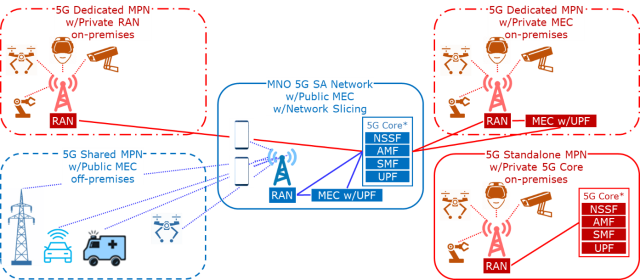Broadband Market will Remain Resilient in 2023
Over the last two years, you’d be hard-pressed to find an area of service provider networks that has received more investment and attention than broadband access networks. For mature markets, is rare to see consecutive years of double-digit revenue growth. But that is indeed what has occurred, as 2021 revenue growth was 16% and 2022 growth over 2021 is currently expected to be around 12%, reaching just over $18 B worldwide.
Historically, after similar periods of strong growth, there is generally a marked slowdown as service providers focus on lighting up all that new equipment and generating recurring revenue in the form of new and upgraded broadband subscriptions. And the likelihood of a slowdown in 2023 would seem even higher, given higher interest rates and the increased cost of going into debt to finance large-scale infrastructure projects, including fiber buildouts.
But even without the benefit of having finalized fourth quarter numbers, all signs—both quantitative and qualitative—point to another year of spending increases on broadband equipment in 2023, albeit nowhere near the double-digit percentage growth we have seen over the last two years. At this point, it is safe to say that 5-7% revenue growth this year is the more likely scenario. Though slower, the revenue growth this year shows the continued emphasis on expanding and improving broadband network capacity by operators as well as state and national governments.
Here is what we are expecting in this coming year:
1) The Great DSL Displacement Will Accelerate
Amidst all the hype around fiber network buildouts, one of the biggest drivers for these investments has gone unspoken, perhaps because it is just assumed—and that is that a large percentage of the revenue growth for PON equipment has come directly at the expense of spending on DSLAM ports and corresponding CPE. While this substitution is obvious, the amount of revenue shifted from DSL to PON equipment over the last two years is informative in helping to understand just how much PON equipment revenue growth is due to Greenfield buildouts and how much is due to overbuilding and the literal retirement of copper and DSL assets.
For reference, DSL equipment revenue from 2019 to 2022 dropped by nearly $1.8 B worldwide. Over that same time frame, PON equipment revenue increased by a whopping $4 B worldwide. Although the correlation isn’t exact, it isn’t spurious to assume that some of that 45% of shifted revenue is due to fiber overbuilds and DSL replacement.
And that trend is only going to accelerate this year, as both BT Openreach and Deutsche Telekom increase their fiber expansion and overbuild projects this year. In the second half of 2022, both operators combined to fuel record quarterly shipments of both 2.5 Gbps and XGS-PON OLT port shipments. These deployments will come in addition to the projects already underway at AT&T, Frontier, Lumen, Bell Canada, Telus, Orange, Telefonica, Saudi Telecom, Turk Telekom, and Maroc Telecom, among others.
2) Subsidies Offset the Increasing Cost of Infrastructure Builds—but Subscriber Growth Will Slow
There are now signs that the Interest rate increases by the world’s largest economies are having their intended effect of lowering red-hot inflation. The flip side, of course, is that economists expect overall growth to slow this year—and a growing number of companies that expanded significantly during the pandemic are responding by laying off employees.
It would be foolish to think that these actions won’t have an impact on service providers and subscribers. Indeed, we do expect new subscriber growth to slow, resulting in flat to perhaps low single-digit ONT unit growth this year. Slowdowns in new housing starts and the purchase of existing homes will also be a drag on overall subscriber growth this year.
At the same time, we do not expect to see any slowdown in the purchase of new PON infrastructure, as state and federal subsidization efforts in the US, several EU countries, Thailand, the Philippines, China, and elsewhere will reduce the effective cost of fiber buildouts and, more importantly, offset the additional cost of any assumed debt due to interest rate increases. Service providers have already gone through a period of investing at historic levels in their broadband networks. Although the macroeconomic environment has dampened their appetites a little, the committed funds available will help keep their investment levels high, as they look to the second half of the year and 2024 for a resumption in subscriber growth.
3) Consensus in Cable Architectures; But Obstacles Remain
With Charter and Comcast now both firmly committed to DAA architectures based on Virtual CMTS and Remote PHY platforms, the supplier industry can breathe a sigh of relief. Now, the focus can shift to supplying the short-term projects of doing mid- and high-split band plan upgrades to increase upstream bandwidth using existing DOCSIS 3.1 technologies, while also preparing the outside plant for forthcoming upgrades to either 1.2 GHz or 1.8 GHz spectrum plans for either full duplex or extended spectrum DOCSIS 4.0 deployments later this year.
In addition, cable’s adoption and deployment of remote OLTs will accelerate, as well, as operators use these modules to expand their own FTTH services to select service groups and business customers. The consensus around Remote PHY for DOCSIS also opens the door for R-OLT modules to be deployed alongside RPDs in select node housings—something that wasn’t possible with R-MACPHY due to power limitations.
But cable’s biggest challenge this year and beyond is one of managing consumer perception. Consumers clearly equate “Fiber” with the future. Therefore, if service prices are roughly equal, consumers are likely to select fiber broadband over cable if the latest technology is what they value. On the other end, if the value is what they are looking for, then providers like T-Mobile have done a phenomenal job of positioning themselves as the alternative who is looking out for your budget while still providing you access to a novel technology—fixed wireless.
So, cable operators find themselves battling against the perception that they are providers with inferior technology that isn’t flexible when it comes to offering plans to meet a consumer’s budget. In this situation, the choice of DAA technology and whether they deploy full duplex or extended spectrum DOCSIS 4.0 is beside the point. From a technology perspective, the focus for cable operators has to be on how they are leading the way in delivering a secure and customizable in-home experience. The conversation has to shift from speeds to what value consumers get along with those speeds.
We are seeing cable operators already make efforts in this direction in the type of gateways they are providing subscribers. They are pushing the envelope with Wi-Fi 6E units, mesh networking, parental controls, as well as the integration of Thread and other evolving IoT technologies to allow subscribers to add sensors and other IoT devices without worrying that their integration will be difficult.
Cable operators will continue to fend off new fiber and FWA competitors with a combination of highlighting speeds that are equal to fiber (at least on the downstream side) but subscriber support that exceeds what the upstarts provide because of their years of experience. Only time will tell whether this message resonates with consumers.



